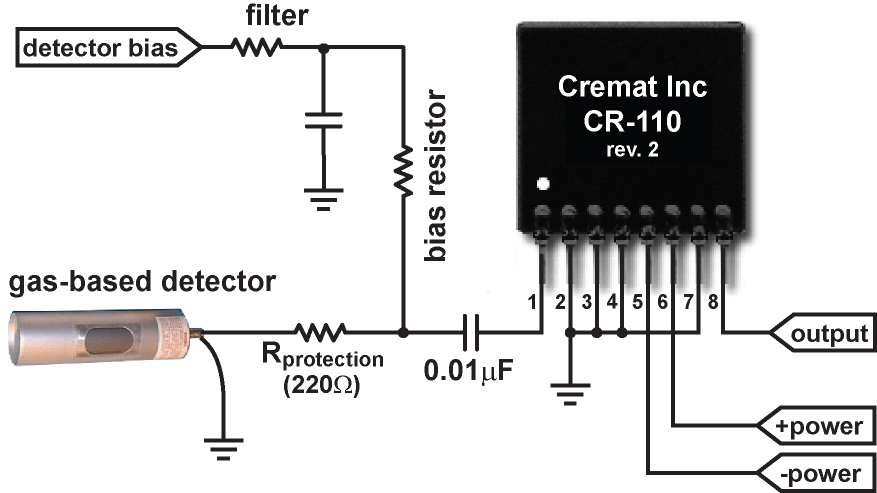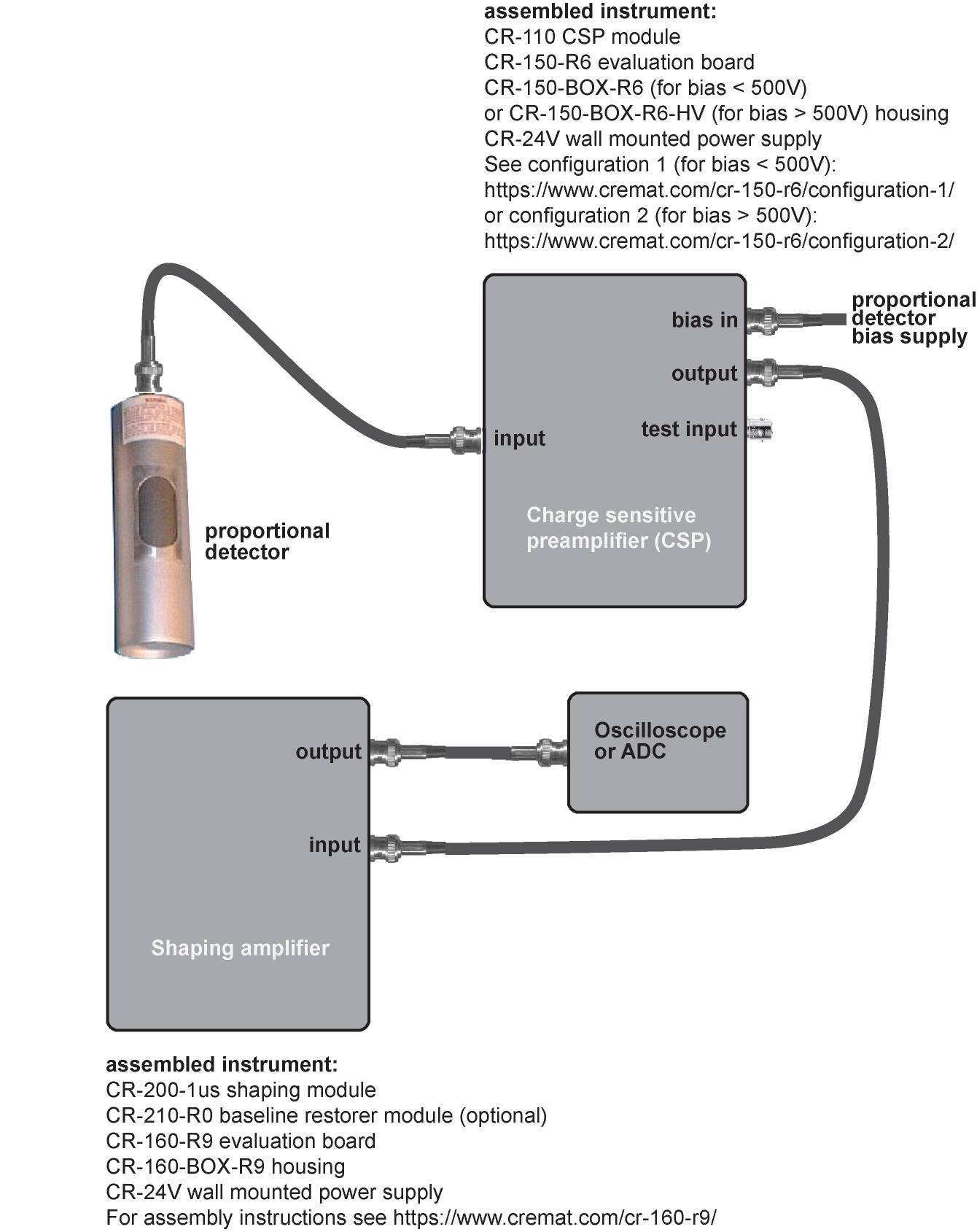Signal pulses from a gas-based detector (e.g. proportional detector, wire drift chambers, BF3, He3) can usually best be read out using a charge sensitive preamplifier (CSP). This is due to the low noise characteristics of CSPs, as well as the integrating nature of the output signal which provides an output proportional to the total charge flowing from the gas-based detector during the pulse event.
Connecting a proportional detector to the CSP:
The usual connection scheme of a proportional detector to the CSP is shown below, and is known as an 'AC coupled' circuit:

Cremat's CR-150-R6 evaluation board uses AC coupling to connect the APD to the CSP module input.
The charge sensitive preamplifier (CSP) shown in the figure above is shown as an 8 pin module. Cremat offers four different CSP modules (CR-110, CR-111, CR-112, and CR-113) which differ primarily by their gain. Gas-based detectors will likely be best served by either the CR-110 or CR-111.
Adding protection to the preamplifier input
In the circuit shown above, the series resistor Rprotection has been added to help protect the preamplifier from the sparking that often occurs with gas-based detectors. This resistor (220Ω is a reasonable value) limits the current flowing to the preamplifier during this rapid discharge. Increasing this resistance increases the protection. This resistor, however, adds a small amount of electronic noise and also may limit the pulse rise time from the preamplifier.
A proportional detector based setup
An overview of the instrumentation for a gas-based (e.g. proportional detector) setup is shown below. To preserve low noise operation, we highly recommend keeping the cable between the detector and the CSP as short as possible.

helpful links:
https://www.cremat.com/cr-150-r6/configuration-1/
https://www.cremat.com/cr-150-r6/configuration-2/
https://www.cremat.com/cr-160-r9/
Choice of shaping time in the shaping amplifier
In the diagram above, the shaping amplifier uses a 1 microsecond shaping time, and is a 'middle of the road' choice for many applications. There are, however, some guidelines to help you determine the best shaping time for your application:
1) Choose a shaping time that is long enough to collect all the charge from the detector. The charge collection time varies, depending on the geometry and bias voltage of the detector. Refer to the detector manual.
2) Choose a shaping time that is short enough to accommodate the expected counting rate of the detection system.